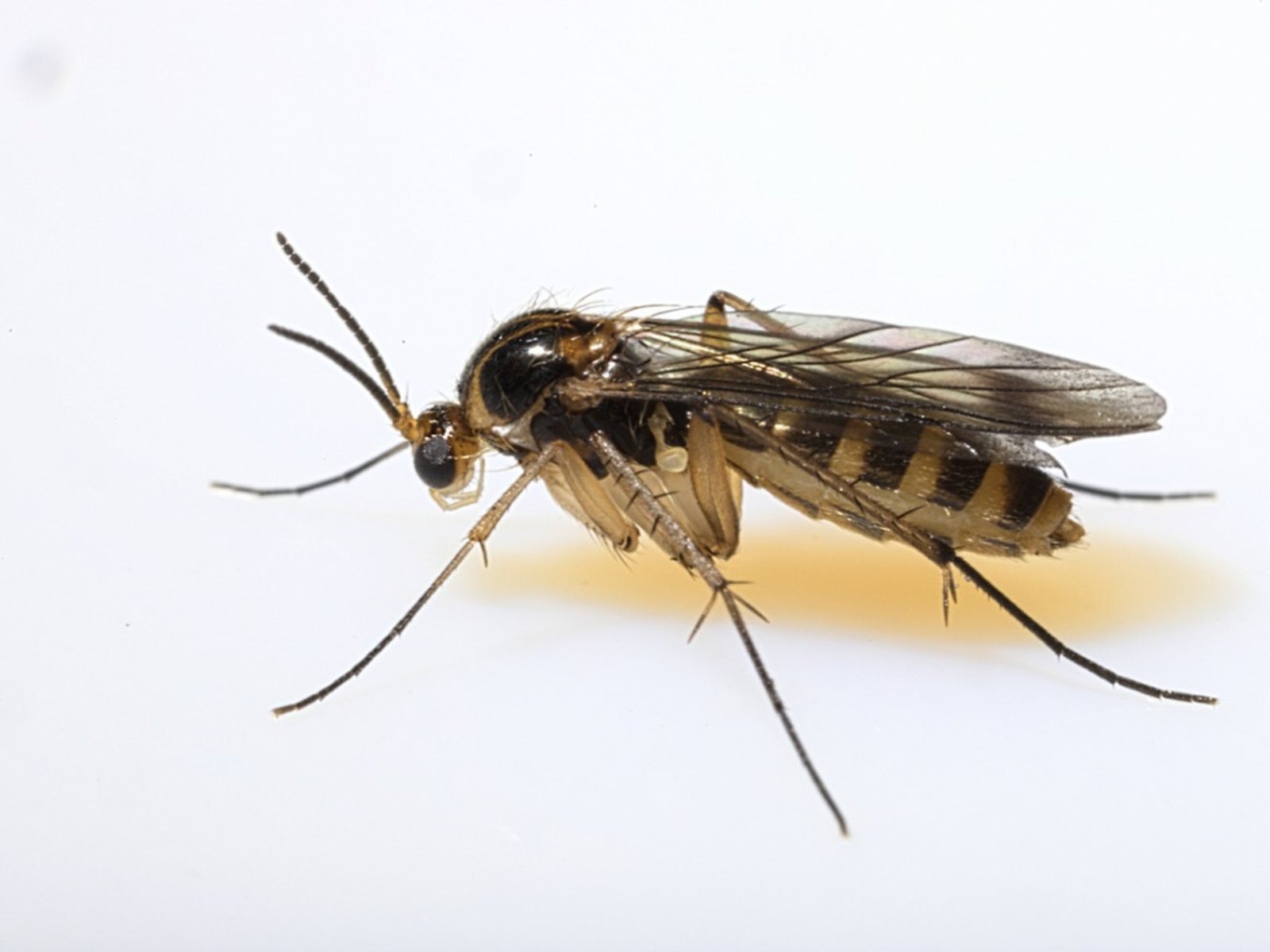Gnats can be a nuisance for any gardener. These tiny pesky flies congregate in garden beds, where they lay eggs and the larvae feed on plant roots and soil fungi. Left unchecked, high populations of fungus gnats can stunt plants, spread disease, and detract from your gardening enjoyment.
While eradicating gnats completely may not be feasible, it is possible to control them and keep numbers down using integrated pest management techniques. This article covers key information all gardeners need to know about gnats in raised beds and how to reduce their presence for healthier plants.
What Are Gnats?
There are many types of small flies that are collectively called gnats Most garden gnats belong to either the fungus gnat (Sciaridae) family or fruit fly (Drosophilidae) family
Fungus gnats are about 1/8 inch long. Adults are mosquito-like with long legs and antennae, transparent gray wings, and dark eyes. The larvae are thin, white maggots.
Fungus gnats are also very small, but fruit flies are rounder and have red eyes. Their maggots are whitish-clear.
Other gnat species like gall midges (Cecidomyiidae) can sometimes inhabit gardens too. Regardless of type, their habits and control are generally similar.
Where Do Garden Gnats Come From?
Gnats seek out moist organic matter to breed in. Female adults lay eggs on soil, compost, mulch, or plant debris. The eggs hatch into larvae that feed on fungi, plant roots, and decaying matter.
Ideal gnat habitat includes:
- Wet potting mix
- Rich organic mulches
- Rotting vegetable matter
- Poorly draining beds
- Overwatered plants
- Decaying plants
- Compost piles
After pupating, mature gnats emerge from the soil to start the cycle again. Generations breed continuously over summer.
Problems Caused by Gnats
Though small, gnats can cause significant headaches for gardeners by:
- Tunneling into roots as larvae, damaging plants
- Spreading fungal diseases like damping off to seedlings
- Causing stunted growth and reduced yields
- Creating entry points for plant pathogens
- Annoying people with their presence
While fungus gnat larvae munch on organic matter, fruit fly larvae feed more on live plant roots and can be especially destructive.
How to Control Gnats in Raised Garden Beds
It takes diligent effort to suppress gnats but here are some effective methods:
Remove Excess Moisture
Gnats need moisture to breed. Allow garden beds to dry out more between waterings to deter them. their larvae die out when the top few inches of soil become dry.
- Check soil moisture before watering. Only water when the first 3-4 inches are dry.
- Improve drainage by mixing in sand, perlite, or gravel.
- Avoid overwatering. Water deeply but infrequently.
- Fix leaks from beds, hoses, or irrigation.
- Discard excess water that collects in saucers under potted plants.
Eliminate Rotting Matter
Eliminate decomposing plant debris, dropped fruit/vegetables, and mulch that gnats may be breeding in.
- Remove fallen leaves, dead plants, and rotted vegetable matter.
- Rake mulch to expose larvae to dryness and predators.
- Turn and maintain compost piles regularly to kill larvae.
- Replace mulch annually to prevent excessive decomposition.
Apply Beneficial Nematodes
Beneficial nematodes are microscopic roundworms that prey on gnat larvae in soil. After watering them in, they actively seek out and infect larvae. Brands like NemAttack and NemaSeek are effective.
- Use nematodes early in the season or at first signs of gnats.
- Water beds thoroughly before and after application.
- Apply monthly for severe infestations.
- Cover beds with tarps overnight to increase humidity after applying.
Use Yellow Sticky Traps
Traps lure adult gnats in with yellow color and stickiness. Position them just above soil level to catch emerging flies.
- Insert sticks into beds and pots around plants.
- Move traps to new locations every 2-4 weeks as they fill up.
- Combine with other methods targeting larvae in soil.
Apply Sand or Diatomaceous Earth Topdress
A thin layer of these abrasive minerals on soil kills gnats through desiccation and abrasion. They also deter egg-laying.
- Apply a 1/4 inch layer evenly across beds.
- Diatomaceous earth (DE) is very fine so doesn’t inhibit watering.
- Look for food-grade DE to avoid skin irritation.
- Reapply DE after rain or watering washes it away.
Repot Infested Plants
For potted plants with severe gnat infestations, starting over fresh may be needed.
- Remove as much old soil as possible from roots.
- Discard old soil in sealed bags so larvae don’t escape.
- Sterilize pots before reusing. Repot in fresh pasteurized mix.
Preventing Future Gnat Issues
Good garden sanitation and cultural practices help avoid severe flare-ups:
- Let beds dry adequately between waterings.
- Eliminate weeds where gnats may breed.
- Remove spent plants immediately after harvest.
- Keep decomposing mulch and compost away from beds.
- Solarize soil in beds to kill larvae before planting.
- Cover new seedlings with row cover fabric to exclude flies.
- Mix sand or perlite into potting mixes to improve drainage.
- Use sterile seed starting mix and containers.
While gnats may always be present at some level, the actions above can significantly reduce their larvae population and minimize impact on plants. Apply multiple tactics together for the best control. With persistence, you can have just an occasional gnat or two, rather than clouds of them spoiling your garden enjoyment.
Get Rid Of Fungus Gnats Forever With This Simple Garden Hack!
FAQ
How do I get rid of gnats in my garden?
Why are there gnats in my garden soil?
How to get rid of gnats in a raised garden bed?
What are the little flies in my raised bed?
- The Ultimate Guide to Growing Strawberries in Raised Beds - August 8, 2025
- No-Dig Garden Beds: The Easiest Way to Grow a Beautiful Garden - August 6, 2025
- How to Protect and Preserve Wood for Raised Garden Beds - August 6, 2025

